It looks like you're using an Ad Blocker.
Please white-list or disable AboveTopSecret.com in your ad-blocking tool.
Thank you.
Some features of ATS will be disabled while you continue to use an ad-blocker.
share:
Originally posted by Hellhound604
that is the difference between using a refractor and a reflector for solar photography. You can use a fairly cheapish refractor, and because you are not really interested in having all the colours, you can basically ignore chromatic aberration. My old 80 mm refractor I modified, having a permanent white light Baader filter on it, and a solar continuum filter in front of the camera. If you have ever taken normal telephoto pictures through a reflector, you would have noticed the little rings caused by the central obstruction (and the other artifacts caused by the spider if you use a Newtonian). The refractor has none of those, so the granulation comes forward a lot easier after using Registax.
With my 8" reflector, I cannot get the granulation so clear, even though it is collimated as near to perfection as what I can get it.
And I just cannot get the same results with my SLR.... maybe they do some internal processing even with the RAW images, or maybe for this kind of work, a CCD is just superior to a CMOS sensor, I am not sure.
(Sorry, I just looked at my 'white light telescope', and I see it is actually a 90mm refractor, and not 80mm, but I don't think that makes any difference.)edit on 6/5/2013 by Hellhound604 because: (no reason given)
I am not sure but if you haven't checked out Magic Lantern for Canon there may be a setting you are looking for.
Originally posted by opethPA
Anyone have any last minute pointers for me?
Things that you find a requirement for shooting the night sky!!
I wish I did. But I'm bumping our question again to make sure people see it.
I do know that carrots are good for night vision. Not as goggles or anything, you just eat them and it's good for you.
Originally posted by opethPA
Anyone have any last minute pointers for me?
Things that you find a requirement for shooting the night sky!!
Mostly its just a matter of getting out there and doing it, with any camera you have.
I've even had good results from one of these...
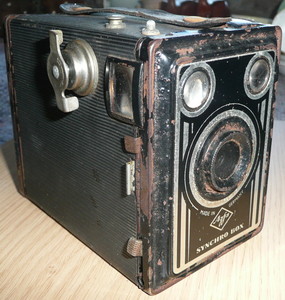
But just start with camera on a tripod, long exposures.
And write down what you do so that you can see later what worked and what didnt.
Originally posted by alfa1
And write down what you do so that you can see later what worked and what didnt.
This is such an obvious thing that i forgot, thank you!
My plan is to review the shots each morning so i can look at the notes and make adjustments.
reply to post by opethPA
Oh man, I forget to take notes all the time too. Batteries and notes, those are the things I always wish I had more of. Hope your trip goes well with lots of clear skies! I also hope you get some great shots that you can post in this thread when you return!
Vince
Oh man, I forget to take notes all the time too. Batteries and notes, those are the things I always wish I had more of. Hope your trip goes well with lots of clear skies! I also hope you get some great shots that you can post in this thread when you return!
Vince
This last group of photos aren't that great. I'll post them anyway as they are the only images I have of these objects until I can take better
ones...
M20 the Trifid Nebula. Has to be one of the more photogenic nebulas in the night sky. Located in the constellation Sagittarius, it's a shame this came out as such a weak photo. Like the other under-exposed shots I have, this one needs more exposure time. Taken using 25 lights at 45 seconds exposure.
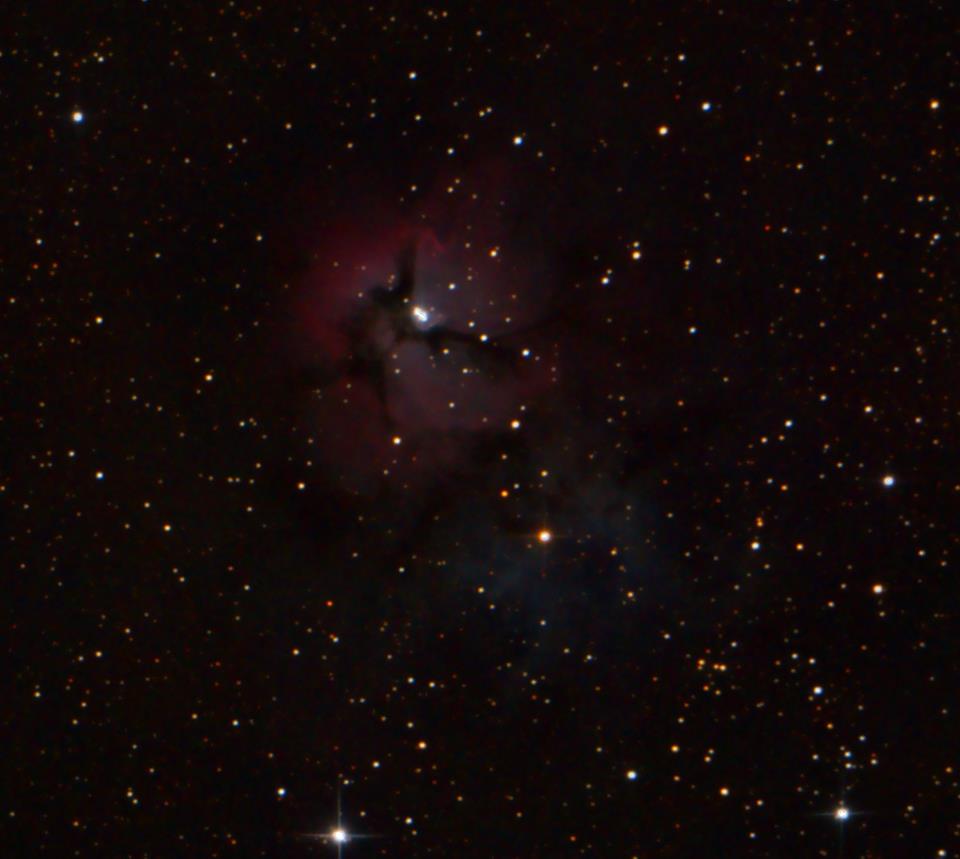
M20 the Trifid Nebula. Has to be one of the more photogenic nebulas in the night sky. Located in the constellation Sagittarius, it's a shame this came out as such a weak photo. Like the other under-exposed shots I have, this one needs more exposure time. Taken using 25 lights at 45 seconds exposure.

Globular cluster M53, located in the constellation coma berenices. This cluster is one of the more distant clusters at 60,000 light years away. It
photographs nicely though. This was 30 lights at 60 seconds exposure each.
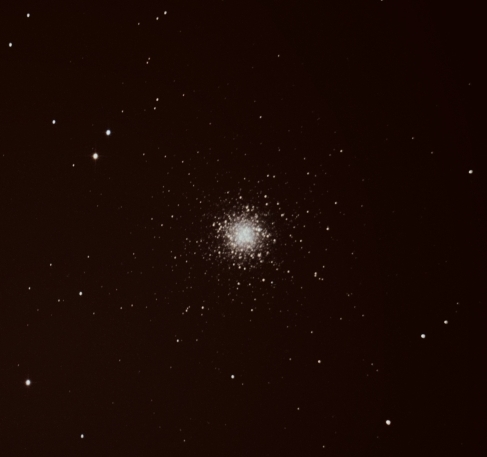

M57, the Ring Nebula located in the constellation Lyra. This is another favorite of mine to view through the eyepiece. Although it only appears as a
faint grayish ring, like a smoke ring, when visually observing. You need the longer exposure of a camera to bring out the colors. This was taking
with 17 lights at 50 seconds exposure.
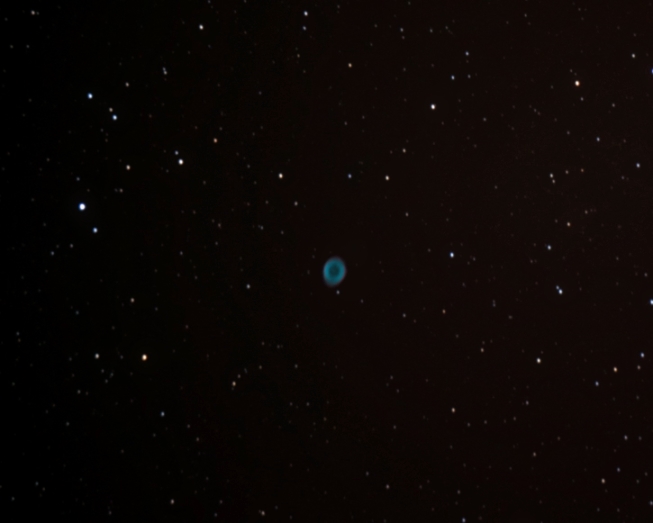

M81, Bodes Galaxy located in Ursa Major. Another one of the spirals that grace the region of the big dipper. This picture is very poor. I had a
terrible mount alignment that night and could only manage 27 second exposures. I should have redone the polar alignment but I was just too impatient.
As a result, the image is flat and washed out with no detail. The fact that you can make out anything at all is a credit to how bright M81 is in the
sky. Not bad for an object that's 12 million light years away.
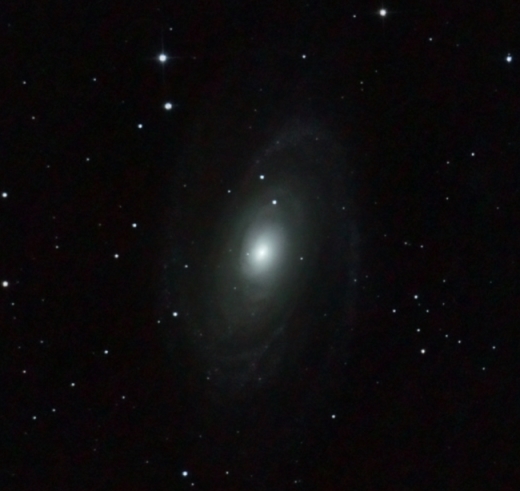

edit on 6-5-2013 by vinceg because: (no reason given)
M82, the Cigar Galaxy. Since this was taken on the same evening I did M81, it suffers all the same faults. It is believed to be interacting with M81
and when you position the telescope just right, you can see both in the field of view.

This is the last of the images I had taken that are worth posting. I hope everyone enjoyed them even though they all need improvement.

This is the last of the images I had taken that are worth posting. I hope everyone enjoyed them even though they all need improvement.
edit on 7/5/2013 by Hellhound604 because: grrrr ... garbage post
reply to post by vinceg
Thanks for your very kind words i find it strange to think that 1 year ago i hadnt even taken a single image of the night sky yet. Feels like i've been doing it for ages!!
Thanks for your very kind words i find it strange to think that 1 year ago i hadnt even taken a single image of the night sky yet. Feels like i've been doing it for ages!!
Loving this thread some awesome images from Vinceg.
Here is an image from Saturday night, stayed up till 4am to get this one. At 3 hours exposure time its the longest i've spent on any target, it was a tough one to process!
M101 - The Pinwheel Galaxy Widefield
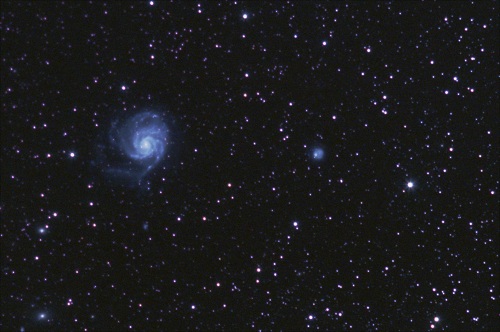
This was taken with a 200mm lens any heavily cropped but i still managed to get some nice detail in the galaxy. Also a few other galaxies scattered around, see if you can spot them!
Made up of 56 180 second exposures at f3.2, ISO 1600.
Here is an image from Saturday night, stayed up till 4am to get this one. At 3 hours exposure time its the longest i've spent on any target, it was a tough one to process!
M101 - The Pinwheel Galaxy Widefield

This was taken with a 200mm lens any heavily cropped but i still managed to get some nice detail in the galaxy. Also a few other galaxies scattered around, see if you can spot them!
Made up of 56 180 second exposures at f3.2, ISO 1600.
And since i've now ran out of DSOs, heres some of my early stuff before i had tracking.
This was taken looking towards the constellation Aquila, near the galactic centre. I used a diffusion filter to brigten stars, but doing this also looses a bit of detail.
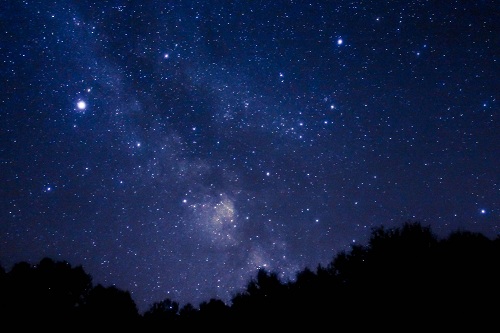
If i remmember right, this image of Cassiopiea was taken on a very dark night.

This next image is many frames that have been stacked together. Nothing special about it really but i recieved an email from BBCs Sky at Night asking to use it. No idea if it ever was used as i dont have anyway to watch it over here!
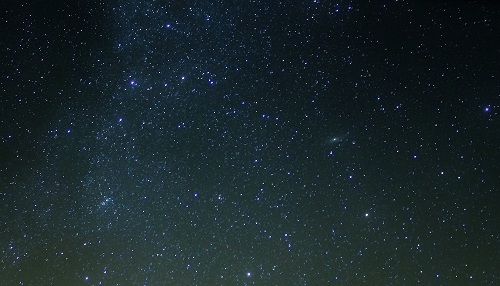
And this one doesnt really focus on the sky but it was taken at night!
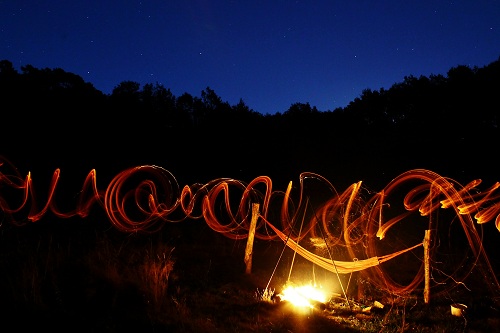
Thats where i spend my nights in the summer. Next to the camp fire, in the hammock under the milkyway... it really doesnt get much better than that
This was taken looking towards the constellation Aquila, near the galactic centre. I used a diffusion filter to brigten stars, but doing this also looses a bit of detail.

If i remmember right, this image of Cassiopiea was taken on a very dark night.

This next image is many frames that have been stacked together. Nothing special about it really but i recieved an email from BBCs Sky at Night asking to use it. No idea if it ever was used as i dont have anyway to watch it over here!

And this one doesnt really focus on the sky but it was taken at night!

Thats where i spend my nights in the summer. Next to the camp fire, in the hammock under the milkyway... it really doesnt get much better than that
It seems i need to dust off my 8" Dobsonion Reflector. I only have moon pictures so far...
Do you need a Barlow Lense for Saturn?
*also bookmarking the thread*
Do you need a Barlow Lense for Saturn?
*also bookmarking the thread*
reply to post by iksose7
That is an awesome photo. That really shows off how large M101 is when you consider it's over 20 million light years away and still appears so large in your photo. Well done!!
Vince
That is an awesome photo. That really shows off how large M101 is when you consider it's over 20 million light years away and still appears so large in your photo. Well done!!
Vince
reply to post by iksose7
These are some nice shots too! I really like the first one of the galactic center. Too much light pollution where I live to get those kinds of photos. Looks like you also managed to get M31(?) in the third one I think. I can't really tell though with so many stars visible. Very cool!
Vince
These are some nice shots too! I really like the first one of the galactic center. Too much light pollution where I live to get those kinds of photos. Looks like you also managed to get M31(?) in the third one I think. I can't really tell though with so many stars visible. Very cool!
Vince
Wow, some really great images posted in the last few days.
I'm really glad I started this thread. Great advice, and really great work!
I hope to have some new shots soon.
I just found a couple of old images.
One is a scan from a 35mm negative. I have this Canon-AE1 film camera from about 1983.
A car came by just as I opened the shutter and it illuminated the top of a telephone pole.

I'm sure you all recognize the comet.
This next shot is a picture of space
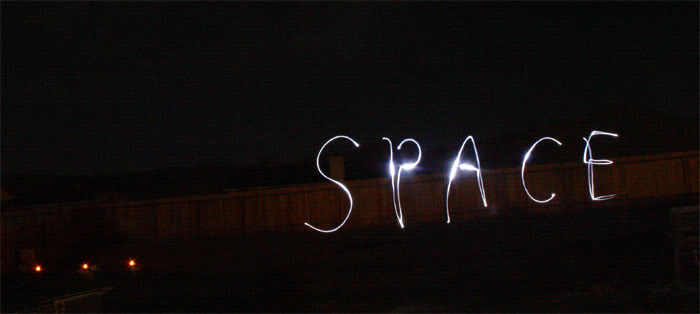
I'm really glad I started this thread. Great advice, and really great work!
I hope to have some new shots soon.
I just found a couple of old images.
One is a scan from a 35mm negative. I have this Canon-AE1 film camera from about 1983.
A car came by just as I opened the shutter and it illuminated the top of a telephone pole.

I'm sure you all recognize the comet.
This next shot is a picture of space

Originally posted by spacedoubt
One is a scan from a 35mm negative. I have this Canon-AE1 film camera from about 1983.
I'm sure you all recognize the comet.
Confused me for a moment because I initially thought you were saying the comet was 1983... and not just the camera, but my guess for the comet would be Hale-Bopp (1997).
new topics
-
This is our Story
General Entertainment: 10 minutes ago -
President BIDEN Vows to Make Americans Pay More Federal Taxes in 2025 - Political Suicide.
2024 Elections: 2 hours ago -
Ode to Artemis
General Chit Chat: 3 hours ago -
Ditching physical money
History: 6 hours ago -
One Flame Throwing Robot Dog for Christmas Please!
Weaponry: 6 hours ago -
Don't take advantage of people just because it seems easy it will backfire
Rant: 7 hours ago -
VirginOfGrand says hello
Introductions: 8 hours ago -
Should Biden Replace Harris With AOC On the 2024 Democrat Ticket?
2024 Elections: 8 hours ago -
University student disciplined after saying veganism is wrong and gender fluidity is stupid
Education and Media: 11 hours ago
top topics
-
Hate makes for strange bedfellows
US Political Madness: 17 hours ago, 20 flags -
University student disciplined after saying veganism is wrong and gender fluidity is stupid
Education and Media: 11 hours ago, 12 flags -
Police clash with St George’s Day protesters at central London rally
Social Issues and Civil Unrest: 14 hours ago, 9 flags -
President BIDEN Vows to Make Americans Pay More Federal Taxes in 2025 - Political Suicide.
2024 Elections: 2 hours ago, 8 flags -
TLDR post about ATS and why I love it and hope we all stay together somewhere
General Chit Chat: 14 hours ago, 7 flags -
Should Biden Replace Harris With AOC On the 2024 Democrat Ticket?
2024 Elections: 8 hours ago, 6 flags -
Don't take advantage of people just because it seems easy it will backfire
Rant: 7 hours ago, 4 flags -
One Flame Throwing Robot Dog for Christmas Please!
Weaponry: 6 hours ago, 4 flags -
God lived as a Devil Dog.
Short Stories: 12 hours ago, 3 flags -
Ditching physical money
History: 6 hours ago, 3 flags
active topics
-
Lawsuit Seeks to ‘Ban the Jab’ in Florida
Diseases and Pandemics • 29 • : Cre8chaos79 -
TLDR post about ATS and why I love it and hope we all stay together somewhere
General Chit Chat • 8 • : Cre8chaos79 -
This is our Story
General Entertainment • 0 • : BrotherKinsMan -
New whistleblower Jason Sands speaks on Twitter Spaces last night.
Aliens and UFOs • 46 • : baablacksheep1 -
Hate makes for strange bedfellows
US Political Madness • 38 • : Terpene -
British TV Presenter Refuses To Use Guest's Preferred Pronouns
Education and Media • 126 • : Asher47 -
Why to avoid TikTok
Education and Media • 17 • : mooncake -
The Superstition of Full Moons Filling Hospitals Turns Out To Be True!
Medical Issues & Conspiracies • 22 • : mooncake -
University student disciplined after saying veganism is wrong and gender fluidity is stupid
Education and Media • 23 • : BigDuckEnergy -
President BIDEN Vows to Make Americans Pay More Federal Taxes in 2025 - Political Suicide.
2024 Elections • 3 • : BingoMcGoof
